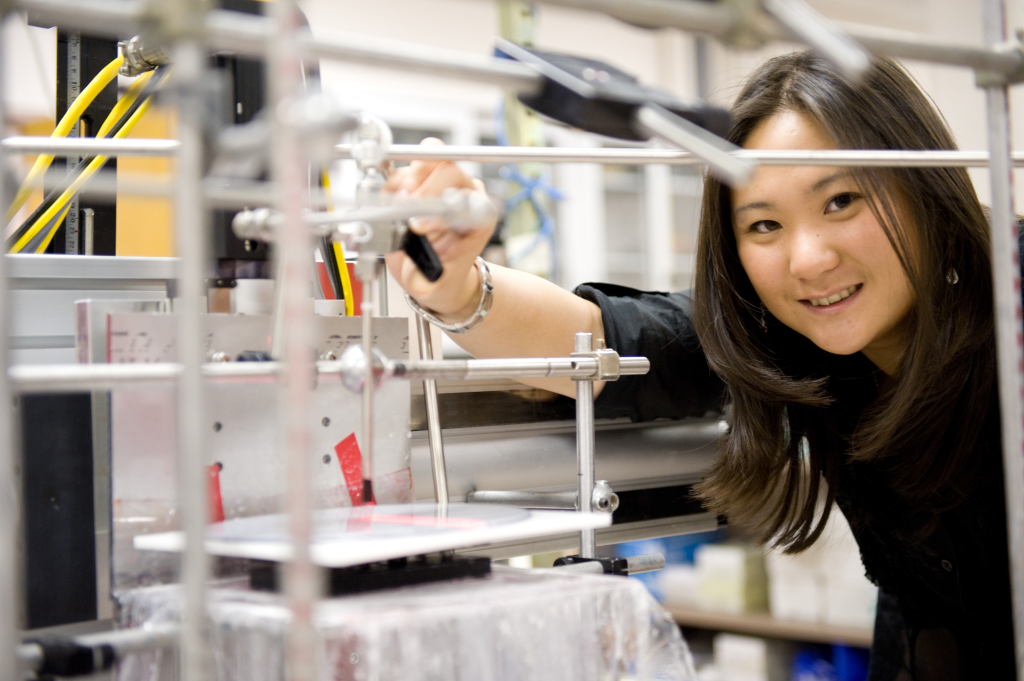Doctoral Candidate
Kaohsiung, Taiwan
Co-Advisor: Professor Curt Frank
Education B.S. Chemical Engineering, Cornell University, 2007
Research Focus
Surface Cleaning Technology using Complex Liquids
[youtube]http://www.youtube.com/watch?v=A9rQhUp-Xgo[/youtube]
Surface contamination is a major problem in several technology-driven industries, ranging from aerospace to pharmaceuticals. It is especially important for integrated circuit fabrication of semiconductors. The current study investigates an approach of surface cleaning using a jet of water to rinse off a cleaning liquid on the substrate. Not only is process prevalent in our everyday lives, this continuous rinsing process is energy efficient, and creates a limited amount of waste.
We aim to understand this cleaning process at both the macroscopic and the molecular level by combining approaches from fluid mechanics, rheology, and surface science. The first component of this project involves a detailed analysis of the flow profile of the rinse. Especially important is to investigate the effect of the rheological characters of the fluids on the flow profile, since cleaning solutions are complex fluids containing surfactants and other additives. Instruments such as the parallel-plate rheometer and the capillary breakup extensional rheometer are currently utilized to measure the responses of the cleaning solution under different forces and stress conditions. Also, an experimental setup was designed utilizing a high-speed camera (at 2000 frames per second) to image the rinsing flows.
The other aspect of this project involves the construction of an experimental set-up to directly image surface in situ. Differential interference
contrast microscopy is utilized, which enables imaging down to the nanometer scale. As in the rinsing flow visualizations, a high-speed camera is used to observe the process in detail. This enables us to determine the relevant timescales for surface cleaning and quantify the number of contaminants removed as a function of time. Then, the effectiveness of cleaning is also evaluated by subjecting the substrate after the cleaning process to Auger spectroscopy. This allows us to quantitatively identify the compounds that are present after the cleaning process and help us improve the process further.
Publications
Weng, Y., Hsu, T.T., Zhao, J., Nishimura, S., Fuller, G.G., & Sonner, J.M. “Isovaleric, methylmalonic, and propionic acid decrease anesthetic EC50 in tadpoles, modulate glycine receptor function, and interact with the lipid 1,2-dipalmitoyl-sn-glycero-3-phosphocholine.” Anesthesia and Analgesia, 108(5), 1538-1545, 2009.

